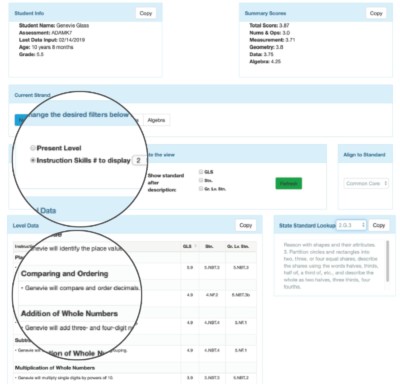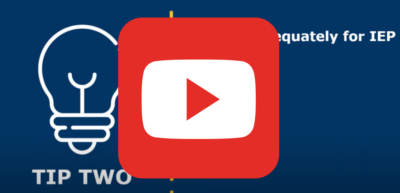Special Education Law
Special Education Law: A Comprehensive Guide for Parents, Educators, and Administrators
Special education law plays a crucial role in ensuring that all students, regardless of their disabilities, have access to a high-quality education. This area of law is designed to protect the rights of students with disabilities, providing them with individualized support and accommodations to help them succeed in their academic journey. While many are familiar with the concept of special education, the complexities of the laws that govern it can sometimes be overwhelming. In this article, we’ll explore the foundational elements of special education law, its key components, its challenges, and how understanding it can empower parents, educators, and administrators to create more inclusive and equitable educational environments.
Complying with special education law is not only important for students, but also for school districts. School districts which fall out of compliance adversely affect the quality of education for their students, but also risk severe financial and operational penalties from lawsuits. Recent examples of districts and states not adequately providing special education services include Garden Valley School District in Idaho in early 2024, and the Supreme Court cases Perez v. Sturgis Public Schools in Michigan, and Endrew F. v. Douglas County School District RE-1 in Colorado.
What Is Special Education Law?
Special education law is a body of federal and state regulations that establish the legal rights of students with disabilities and their families. These laws ensure that students with disabilities have equal access to education and that schools provide appropriate services to meet their unique needs. The primary federal law governing special education in the United States is the Individuals with Disabilities Education Act (IDEA), but there are other important laws that work alongside IDEA to protect the rights of students with disabilities, such as Section 504 of the Rehabilitation Act of 1973 and the Americans with Disabilities Act (ADA).
A Brief History of Special Education Law
Before the mid-20th century, students with disabilities were often excluded from public schools. Many were denied the opportunity to learn in a traditional classroom setting, and there were few if any, legal protections in place to safeguard their educational rights. In 1975, Congress passed the Education for All Handicapped Children Act (EAHCA), which later became IDEA. This landmark legislation marked a turning point, ensuring that students with disabilities could no longer be excluded from public education and that they had the right to a free and appropriate public education (FAPE).
Since its passage, IDEA has been amended several times to reflect changing educational practices and societal values. Today, IDEA remains the cornerstone of special education law, providing a framework for how schools must serve students with disabilities.

The Core Principles of IDEA
The Individuals with Disabilities Education Act (IDEA) outlines several key principles that guide the education of students with disabilities:
- Free and Appropriate Public Education (FAPE): All students with disabilities are entitled to a public education that is tailored to their individual needs and is provided at no cost to their families.
- Least Restrictive Environment (LRE): Students with disabilities should be educated in the least restrictive environment possible, meaning they should be placed in general education classrooms with their nondisabled peers whenever appropriate. This principle emphasizes inclusion and integration.
- Individualized Education Program (IEP): Each eligible student with a disability must have an Individualized Education Program (IEP) that outlines specific goals, accommodations, and services designed to meet their unique educational needs.
- Procedural Safeguards: IDEA includes a variety of procedural safeguards to protect the rights of students and their families. These safeguards ensure that parents have a voice in their child’s education and that schools are held accountable for providing appropriate services.
- Parent and Student Participation: Parents and, when appropriate, students must be actively involved in the development of the IEP and other decision-making processes related to the student’s education.
- Appropriate Evaluation: Students must receive an accurate and thorough evaluation to determine their eligibility for special education services and to inform the development of their IEP.
These principles serve as the foundation for special education services in schools across the country, ensuring that students with disabilities receive the individualized support they need to thrive academically and socially.
Individualized Education Programs (IEPs)
The Individualized Education Program (IEP) is a critical component of IDEA and a key tool in ensuring that students with disabilities receive an education tailored to their specific needs. The IEP is a legally binding document developed by a team that typically includes the student’s parents or guardians, teachers, special education professionals, and other relevant stakeholders. Together, this team assesses the student’s strengths and challenges, sets educational goals, and determines the appropriate services and accommodations the student will receive.
Key Components of an IEP:
- Present Levels of Academic Achievement and Functional Performance (PLAAFP): This section outlines the student’s current academic and functional abilities, providing a baseline from which progress can be measured.
- Annual Goals: These are specific, measurable goals that the student is expected to achieve within a year. They are based on the student’s individual needs and are designed to help the student make progress in the general education curriculum.
- Special Education Services and Supports: The IEP outlines the specific services, accommodations, and modifications that the student will receive. This can include things like speech therapy, occupational therapy, assistive technology, and instructional aides.
- Participation in General Education: The IEP team determines the extent to which the student will participate in general education classes and extracurricular activities. The goal is to integrate the student into the general education environment as much as possible, while still providing the necessary support.
- Progress Monitoring: The IEP must include a plan for how the student’s progress toward their goals will be measured and how often progress reports will be provided to parents.
IEPs are not static documents. They must be reviewed at least once a year, and adjustments can be made as needed to ensure the student continues to make progress. Parents have the right to request an IEP meeting at any time if they believe their child’s needs are not being met.
A critical safeguard for parents of children with disabilities is ensuring that an IEP meets legal requirements. If an IEP is deemed non-compliant, schools and educators can encounter various administrative or legal actions, which vary based on the seriousness and recurrence of the violation. These consequences aim to protect the educational rights of students with disabilities and ensure they receive the necessary services and support to succeed academically.
Section 504 and the Americans with Disabilities Act (ADA)
While IDEA focuses specifically on students who require special education services, Section 504 of the Rehabilitation Act of 1973 and the Americans with Disabilities Act (ADA) provide broader protections for students with disabilities.
Section 504:
Section 504 is a civil rights law that prohibits discrimination against individuals with disabilities in programs that receive federal funding, including public schools. Unlike IDEA, which applies to students who need specialized instruction, Section 504 applies to all students with disabilities, including those who may not require special education services but still need accommodations to access their education.
For example, a student with diabetes may not require special education, but under Section 504, the school must provide accommodations like allowing the student to take breaks to monitor blood sugar levels or providing a place to store medical supplies.
A 504 Plan is similar to an IEP in that it outlines the accommodations and services the student will receive. However, 504 Plans are generally less comprehensive than IEPs and focus primarily on removing barriers to learning rather than providing specialized instruction.
Americans with Disabilities Act (ADA)
The ADA is a broad civil rights law that prohibits discrimination based on disability in all areas of public life, including schools. The ADA ensures that students with disabilities have equal access to educational facilities, extracurricular activities, and other services provided by the school. This law complements IDEA and Section 504, helping to create an environment where students with disabilities can participate fully in school life.
Challenges in Special Education Law
While the legal framework for special education is well-established, there are challenges in ensuring that all students with disabilities receive the services they need. Some of the most common challenges include:
Resource Limitations:
Many schools face budget constraints and staffing shortages, which can make it difficult to provide all the services outlined in a student’s IEP or 504 Plan. Special education services can be costly, and schools may struggle to find qualified personnel to deliver these services.
Compliance and Accountability:
Ensuring that schools comply with IDEA, Section 504, and the ADA requires a significant amount of oversight. While procedural safeguards are in place, there are cases where schools fail to provide the necessary services, either due to a lack of resources or a misunderstanding of the law. This can lead to disputes between parents and schools, which may need to be resolved through mediation or legal action.
Inclusion vs. Specialized Services:
The principle of educating students in the least restrictive environment can sometimes lead to disagreements about the best placement for a student. While inclusion in general education classrooms is the goal, some students may require more specialized settings to meet their needs. Finding the right balance between inclusion and specialized support can be challenging for IEP teams.
Parental Involvement:
Parents play a critical role in advocating for their child’s education, but not all parents have the knowledge or resources to fully understand their rights under special education law. Schools must work to ensure that parents are informed and involved in the decision-making process.
The Role of Data in Special Education
One of the most powerful tools for overcoming these challenges is data. Platforms like Let’s Go Learn offer data-driven solutions that help educators assess, monitor, and support students with disabilities. By providing detailed insights into each student’s strengths and areas for growth, Let’s Go Learn enables schools to make informed decisions about the services and supports a student needs to succeed.
Using assessments tailored to individual learning profiles, Let’s Go Learn helps educators track progress, adjust instructional strategies, and ensure that they are meeting the legal requirements outlined in the IEP or 504 Plan. By leveraging data, schools can better serve their students, ensuring that they receive the education they are legally entitled to under special education law.

How Let’s Go Learn Can Be Used for Writing IEPs
Creating an effective and legally compliant IEP requires a thorough understanding of the student’s current academic performance, strengths, and areas of need. One of the key challenges for educators and specialists involved in the IEP process is collecting accurate, data-driven information that can be used to set measurable goals and design appropriate supports. This is where Let’s Go Learn’s comprehensive assessment tools come into play.
Let’s Go Learn offers a range of adaptive diagnostic assessments that provide educators with the detailed information they need to develop tailored, effective IEPs. By utilizing Let’s Go Learn’s tools, educators can ensure that IEPs are based on objective data and provide a clear roadmap for helping students achieve their educational goals. Here’s how Let’s Go Learn can support the IEP-writing process:
1. Accurate Baseline Data
One of the most important aspects of writing an IEP is establishing the student’s Present Levels of Academic Achievement and Functional Performance (PLAAFP). This section provides a snapshot of where the student currently stands in terms of academic skills, which serves as a baseline for setting goals. Let’s Go Learn’s assessments, such as the ADAM (Adaptive Diagnostic Assessment of Mathematics) and DORA (Diagnostic Online Reading Assessment), offer precise data on the student’s performance across multiple domains.
For example, in math, the ADAM assessment can break down the student’s skills in various subdomains such as algebra, number operations, and geometry, allowing the IEP team to identify specific strengths and weaknesses. Similarly, DORA provides detailed insights into a student’s reading comprehension, phonics skills, and decoding abilities. This level of granularity ensures that the IEP is built on a solid foundation of data, making it easier to create specific, measurable goals.
2. Creating Measurable Annual Goals
Once the student’s baseline performance is established, the next step in writing an IEP is setting Annual Goals. These goals should be SMART (Specific, Measurable, Achievable, Relevant, and Time-bound) and aligned with the student’s needs. Let’s Go Learn’s platform provides educators with the data necessary to craft realistic and measurable goals.
For example, if a student’s DORA assessment shows difficulty with reading fluency, a goal could be: “By the end of the school year, the student will improve reading fluency from 60 words per minute to 90 words per minute, as measured by DORA assessments.” The platform’s data-driven insights allow educators to set targeted goals that can be tracked over time, ensuring that the IEP is actionable and focused on student growth.
3. Personalized Instructional Recommendations
In addition to helping create goals, Let’s Go Learn also offers personalized instructional recommendations that can be incorporated into the IEP. Based on the results of the assessments, the platform suggests specific strategies, resources, and interventions tailored to the student’s unique needs.
For instance, if a student struggles with math word problems, the platform might recommend interventions that focus on improving problem-solving strategies and comprehension of math language. These instructional strategies can be documented in the IEP under the section for Specially Designed Instruction or Supplementary Aids and Services, helping to ensure that the student receives the appropriate support to make progress toward their goals.
4. Ongoing Progress Monitoring
Another crucial component of an effective IEP is the ability to monitor the student’s progress toward their goals. Let’s Go Learn allows educators to conduct regular assessments that track student growth over time. With tools like ADAM and DORA, teachers can re-assess students at regular intervals, such as quarterly or biannually, to determine whether they are making progress toward the goals outlined in the IEP.
The platform generates easy-to-understand reports that can be shared with the IEP team and the student’s parents. These reports include visual representations of the student’s growth, helping all understand how well the student is progressing and whether adjustments to the IEP are necessary. If the student is not making adequate progress, the IEP team can use this data to modify the goals or introduce additional support.
5. Collaboration and Communication
Effective IEPs require close collaboration between educators, specialists, administrators, and parents. Let’s Go Learn fosters this collaboration by providing detailed, shareable reports that can be easily reviewed by all members of the IEP team. This makes it easier for everyone involved to stay informed about the student’s progress and ensure that the IEP remains a living document that adapts to the student’s changing needs.
Moreover, because Let’s Go Learn’s assessments are conducted online, they offer flexibility for remote or in-person collaboration, making it easier for IEP teams to meet and discuss results, even if members are not physically present at the school. This is particularly valuable for larger school districts or situations where parents or specialists may need to join meetings remotely.
6. Legal Compliance and Documentation
Finally, using a data-driven platform like Let’s Go Learn ensures that schools comply with the legal requirements outlined in IDEA. The system’s robust tracking and reporting capabilities provide a clear audit trail of the student’s progress and the interventions used, which is critical for ensuring legal compliance. In the event of a dispute or legal review, having detailed, data-backed documentation can protect schools and provide evidence that the student’s educational needs are being addressed appropriately.
Conclusion: Transforming IEP Development with Data-Driven Insights
Writing an IEP is a complex process that requires careful consideration of a student’s needs, strengths, and progress. With the help of Let’s Go Learn’s diagnostic assessments and progress monitoring tools, educators can create more accurate and effective IEPs that are tailored to the individual needs of each student. By providing comprehensive data, actionable recommendations, and ongoing monitoring, Let’s Go Learn supports educators in meeting both the legal requirements of IDEA and the practical needs of their students.
Whether you’re a teacher writing your first IEP or an experienced special education coordinator, using data-driven platforms like Let’s Go Learn can help ensure that your IEPs are not only compliant but also truly effective in helping students grow and succeed.
At Let’s Go Learn, we are committed to empowering educators and administrators with the tools they need to make informed decisions and create meaningful educational plans. Explore our assessment solutions today and see how we can help you streamline the IEP process, improve student outcomes, and support the success of every learner.



Leave A Comment